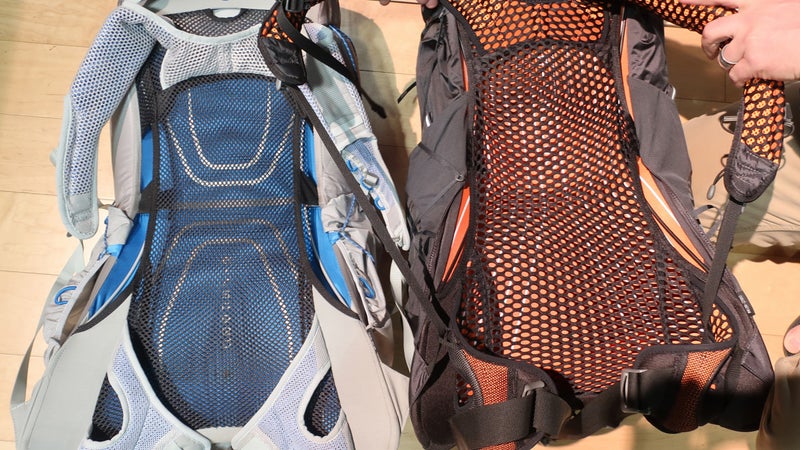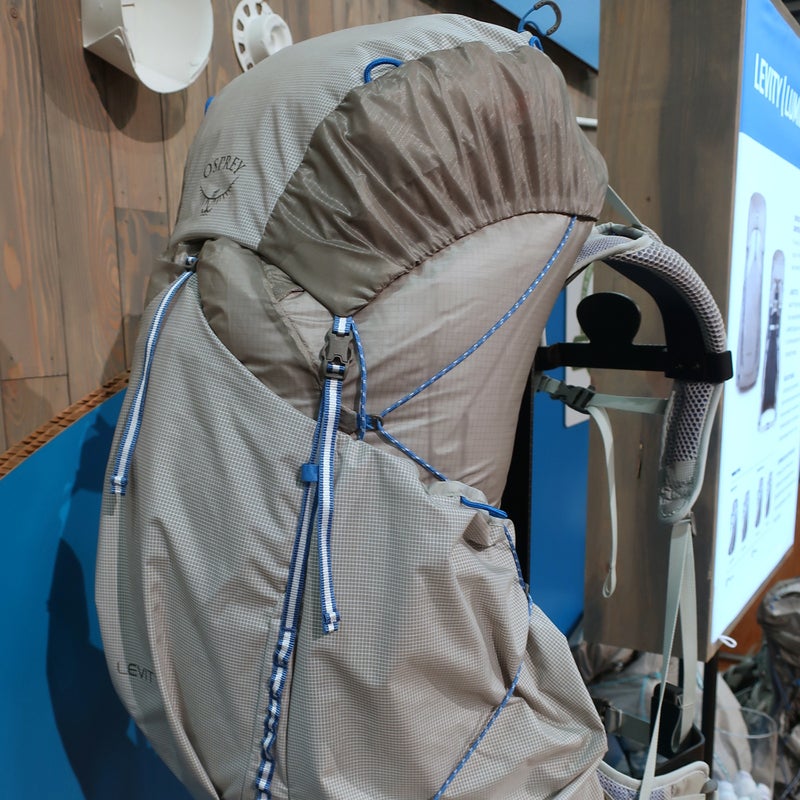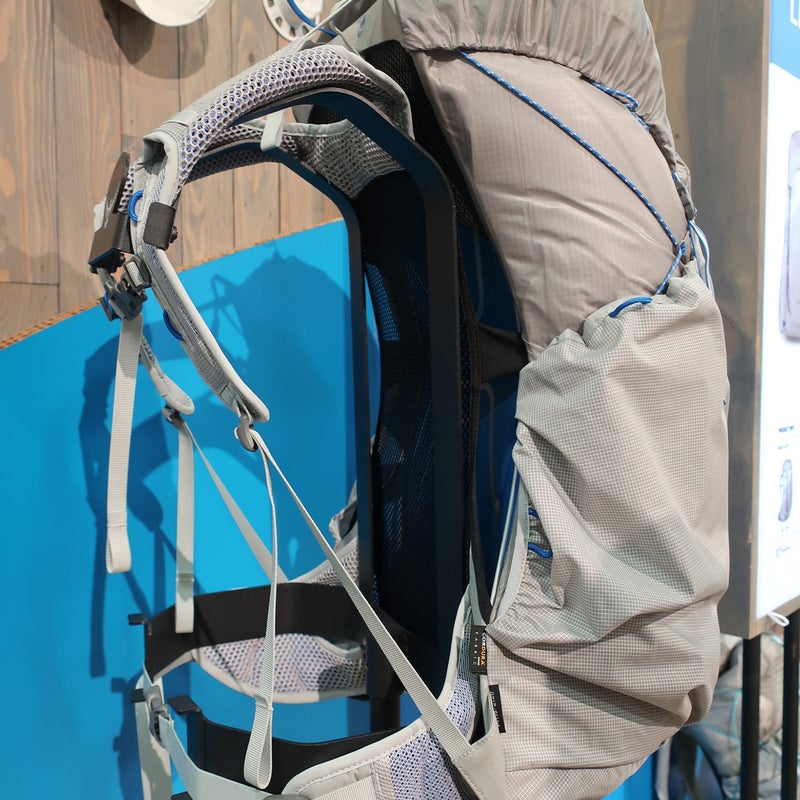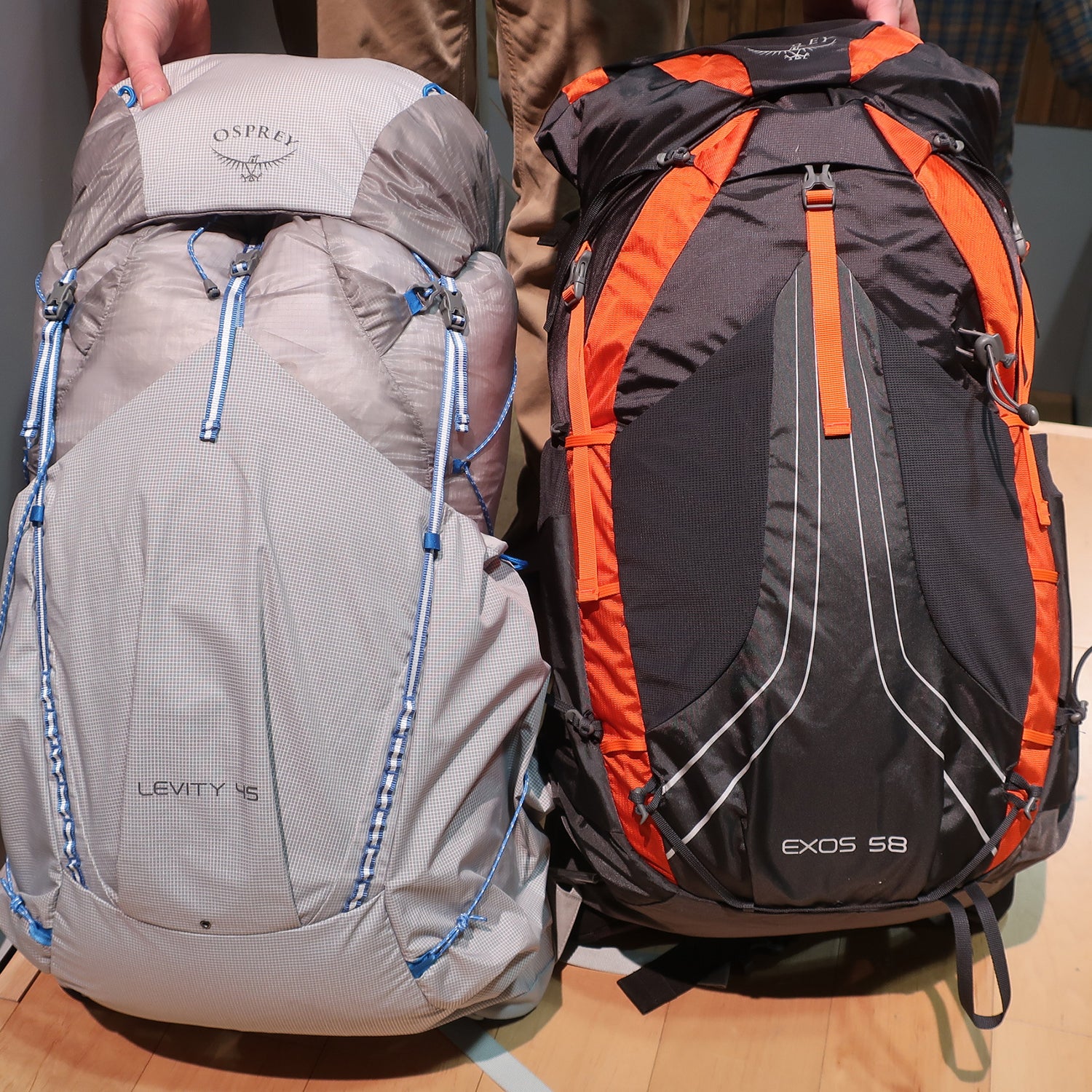It’s unusual for a company to state that its brand-new product is “probably not the right [one] for you.” But Osprey did exactly that in describing its new “super ultralight” backpack, which just recently became available in four versions:
-
(men’s, $250, 1 lb 13 oz in size M)
-
(men’s, $270, 1 lb 15 oz in size M)
-
(women’s, $250, 1 lb 12 oz in size S)
-
(women’s, $270, 1 lb 14 oz in size S)
You may think that this is reverse psychology and that Osprey privately hopes every backpacker in the world buys the Levity/Lumina. But I think the brand is being refreshingly honest—and I agree that it’s probably not the right pack for you.
At Outdoor Retailer in mid-January, I spoke with Osprey folks at length about the Levity/Lumina to better understand the pack’s intended use and the compromises that were made to achieve its sub-two-pound weight.
Context

For many years, Osprey’s lightest overnight backpack has been the Exos. It’s available in three volumes: the , , and . This spring, Osprey created a women’s version, , in this same three-volume configuration. (I didn’t ask Osprey specifically about differences between its men’s and women’s packs, but industry norms relate to sizing and colors, not the feature set. Women’s packs typically have narrower back panels, more-angled hipbelts, and less spread between and different curvature of the shoulder straps.)
The Exos/Eja is a solid lightweight backpack, coming in at 2.5 to 2.75 pounds. It’s made entirely of durable fabrics and has a functional feature set, including double-entry side pockets and a large rear pocket. The Exos/Eja also uses Osprey’s renowned AirSpeed suspension, which creates a ventilating channel between your body and the pack.
But there are lighter packs on the market. For example, the ZPacks Arc Blast has an AirSpeed-like suspension but weighs only 1.3 pounds (albeit with a $325 price tag). The ULA Ohm 2.0 is similarly capable and priced but weighs a half-pound less. And the Flex Capacitor 40-60, which I co-developed with Sierra Designs, weighs the same but is capable of hauling 70-pound elk quarters.
So Osprey set out to design a very lightweight pack suitable for very lightweight loads while retaining Osprey’s masterful fit and comfort. The company has the additional advantages of an All Mighty Guarantee and widespread local retail distribution.
Is the Levity/Lumina Right for You?

There is a lot of excitement and buzz about the Levity/Lumina right now. But who should actually buy one? Here are four questions you should consider before pulling the trigger.
1. Is your base weight very low?
If you’re uncertain what I mean by “base weight,” you can probably stop reading now. In backpacking geek-speak, base weight is the weight of your pack without consumables like food, water, and fuel. The weight of worn items like your hiking shirt, shoes, and trekking poles aren't included either.
Osprey recommends loading the Lumina/Levity with no more than 25 to 30 pounds. It will not be comfortable with heavier loads: It has small, unpadded hipbelt wings, and the hipbelt webbing is only 20 millimeters wide. The shoulder straps are only lightly padded.
This limitation makes the Levity/Lumina best for gram-counting backpackers (think thru-hikers) and for short trips in wet environments, when the additional weight of food and water will be minimal. It’s not a good choice for new or casual backpackers who unintentionally or purposely carry extraneous weight, or for long trips (like, say, a week or more, especially when you’re carrying a bear canister) or in arid environments.
2. Do you hike only on trails, and are you willing to baby your gear?
To save weight, Osprey made the pack bag out of 30-denier silicone-impregnated nylon, which is commonly used as a lightweight tent-floor fabric but is rare in backpacks.
In the most abrasion-prone areas of the pack, like the bottom and side pockets, the 30D is wisely covered with a heavier duty 210D nylon x 200D ultra-high-molecular-weight polyethylene (UHMWPE). Osprey branded it as NanoFly, and it’s similar in construction, strength, and abrasion-resistance to Dyneema fabric, a time-tested lightweight pack fabric.
But enough of the 30D remains exposed to rule out the Lumina/Levity for any off-trail travel. It will not withstand abrasion from, say, Cascade alder, Alaskan willow, or New Hampshire guard spruce. It would also be ravaged by contact with Utah sandstone or High Sierra granite.
Similarly, the 30D fabric will probably not withstand the weight or abrasion of, say, a chainsaw (sorry, trail crew), a 12-pack of beer in a cardboard box, or perhaps even a bear canister if it’s awkwardly shoved in there. Don’t plan to sit on this pack during rest breaks or check it with TSA before a flight.

3. Is extra fuss worth a few ounces to you?
To strip every gram from the Levity/Lumina, Osprey removed many nice to have but generally unnecessary features, like ice ax loops, sleeping pad straps, and the Stow-on-the-Go trekking pole attachment system. It also used very lightweight trims (for example, 10mm webbing for the top lid, 2mm cord for the compression system, and very simple sternum strap) that are less user-friendly: They’re not as durable, secure, or versatile, and they’re more difficult to use with cold fingers or gloves.
4. Super ultralight or stupid ultralight?
The Levity/Lumina is a cool pack, and I applaud Osprey for pushing the boundaries and giving gram-conscious backpackers another option. In this weight class, the Levity/Lumina is truly unique for its Airspeed suspension, warranty, and local availability. I also appreciate that Osprey is not disguising the limitations of this pack.
If you decide that the Levity/Lumina is not for you, thankfully there are many other options that are a bit heavier but less compromised. Start by looking at the Exos/Eja, which are about 12 ounces heavier on average and $50 to $70 less expensive. Beyond Osprey, this category is served by other brands like Gossamer Gear, Granite Gear, Hyperlite Mountain Gear, Sierra Designs, Superior Wilderness Designs, and ULA Equipment.


